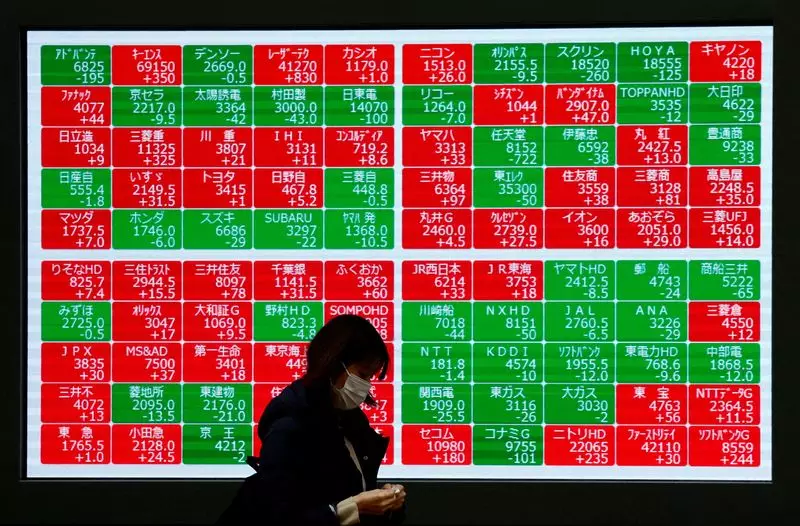The current financial market trends show that Asian stocks are rising, indicating the potential for the fourth consecutive month of gains. However, the dollar is drifting lower, impacting Treasury yields and investor sentiment. The economic data from the first quarter suggests that the U.S. economy may have grown slower than expected, leading to speculation about potential rate cuts by the Federal Reserve.
Asian stocks, particularly China and Japan, are experiencing positive movement, with the MSCI’s broadest index of Asia-Pacific shares outside Japan rising by 0.55% and China’s blue-chip index up by 0.23%. Despite China’s manufacturing activity unexpectedly falling in May, there are indications of market resilience and calls for additional stimulus to counter ongoing challenges in the economy.
Investors are closely watching inflation readings in Europe and the U.S., as they are likely to influence global interest rates. The Federal Reserve’s preferred inflation gauge, the U.S. core personal consumption expenditures price index, is particularly significant in determining the Fed’s future policy decisions. Market analysts are cautious about potential surprises in the PCE inflation data and are closely monitoring European and U.S. economic indicators.
The Japanese yen has remained stable despite recent fluctuations, with authorities possibly considering intervention to support the currency. Speculation surrounds the impact of weaker U.S. economic data and a shift in Fed policy on the yen’s performance. However, the vast yield gap between the U.S. and Japan presents challenges for the yen, as traders use it to fund investments in higher yielding currencies.
The Bank of Japan faces uncertainty regarding the timing of its next interest rate hike, with core consumer prices rising in May but showing mixed results when excluding fuel costs. Analysts suggest that even if the BOJ raises rates, the increase may be minimal and insufficient to bridge the gap with U.S. interest rates. The potential for carry trade interest remains if the dollar/yen pair approaches key levels.
The European Central Bank’s policy path remains uncertain, with markets expecting rate cuts following an inflation report from the euro zone. The ECB is likely to cut rates in June, but future decisions are subject to speculation, with 60 basis points of cuts predicted for the year. The outcome of ECB decisions can significantly impact market dynamics and investor sentiment.
In the commodities market, oil prices are easing following an unexpected increase in U.S. gasoline stocks. Brent futures and U.S. West Texas Intermediate crude are showing slight declines. Gold prices, however, are on the rise, indicating a positive trend with over a 2% gain in May. Commodity pricing can be influenced by various factors, including supply and demand dynamics and global economic conditions.
The current financial market trends reflect a complex interplay of economic indicators, central bank policies, and global dynamics. Investors face uncertainties regarding inflation, interest rates, and currency stability, necessitating a cautious and informed approach. Monitoring key data releases, central bank decisions, and market movements is essential to navigating the evolving landscape of the financial markets.


Leave a Reply